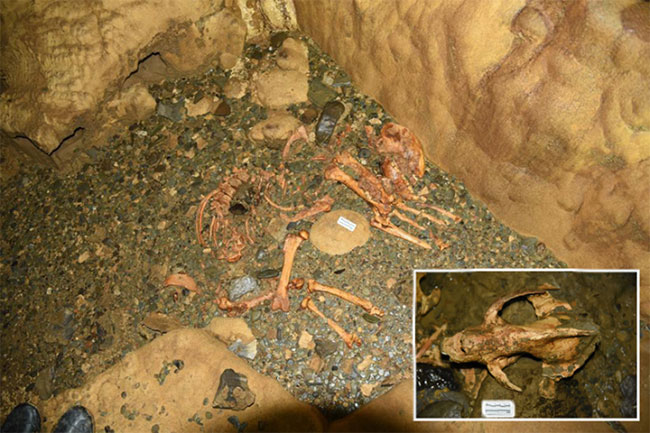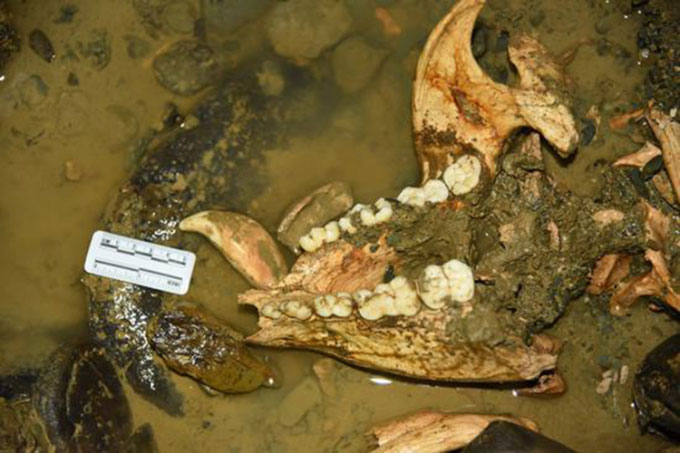Paleontologists announced on December 8 the discovery of two rare skeletons of prehistoric pandas in the longest cave in China.
The excavation, conducted by the Mountain Resources Institute of Guizhou Academy of Sciences, took place in the Shuanghe Cave in the town of Zunyi, Guizhou Province, southwestern China. Using dental enamel dating technology, the research team reported that one of the fossils dates back approximately 102,000 years, while the other skeleton is around 49,000 years old.

A panda skeleton discovered in Shuanghe Cave in Guizhou. (Photo: Xinhua).
“It is very rare to find well-preserved large panda fossils anywhere,” emphasized research assistant Wang Deyuan at the Mountain Resources Institute.
The latest analysis of the joints conducted by foreign experts has revealed evidence of sesamoid bones in the two fossils. These are small bone structures located beneath the tendons, typically found in the joints of the hands or feet.
Since pandas use their thumbs to grip and manipulate bamboo while eating, their limbs are quite different from those of other bear species, particularly in the structure of the sesamoid bones. In fact, a panda’s thumb is an unusually enlarged wrist bone, enabling the species to grasp food effectively.

A piece of panda jawbone still retains many well-preserved teeth. (Photo: CNS)
This new discovery reflects that pandas from tens of thousands to hundreds of thousands of years ago had physiological structures that allowed for flexible use of their forelimbs to grasp bamboo shoots, similar to modern pandas. This enhances our understanding of the evolutionary process of the species concerning their foraging traits.
Shuanghe Cave provides an ideal habitat for prehistoric pandas due to its complex internal structure with many interconnected openings. To date, nearly 30 large panda fossils have been discovered at the site.
The longest cave in China is rich in mammal fossil resources. In addition to panda bones, many fossils of wild dogs, rhinoceroses, black bears, saber-toothed elephants, civets, and other mammals have also been found at Shuanghe in previous excavations.


















































